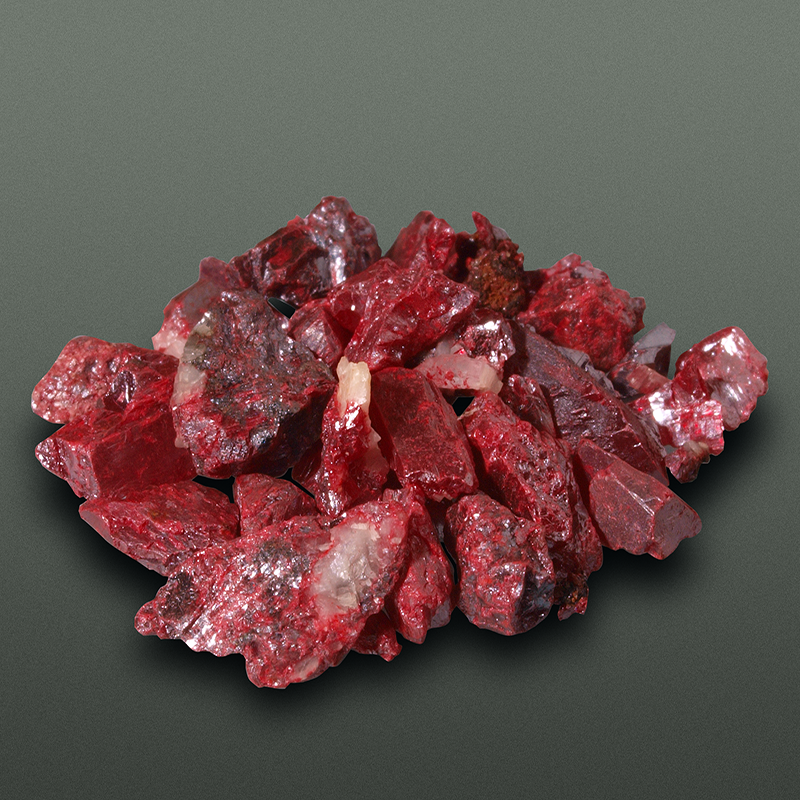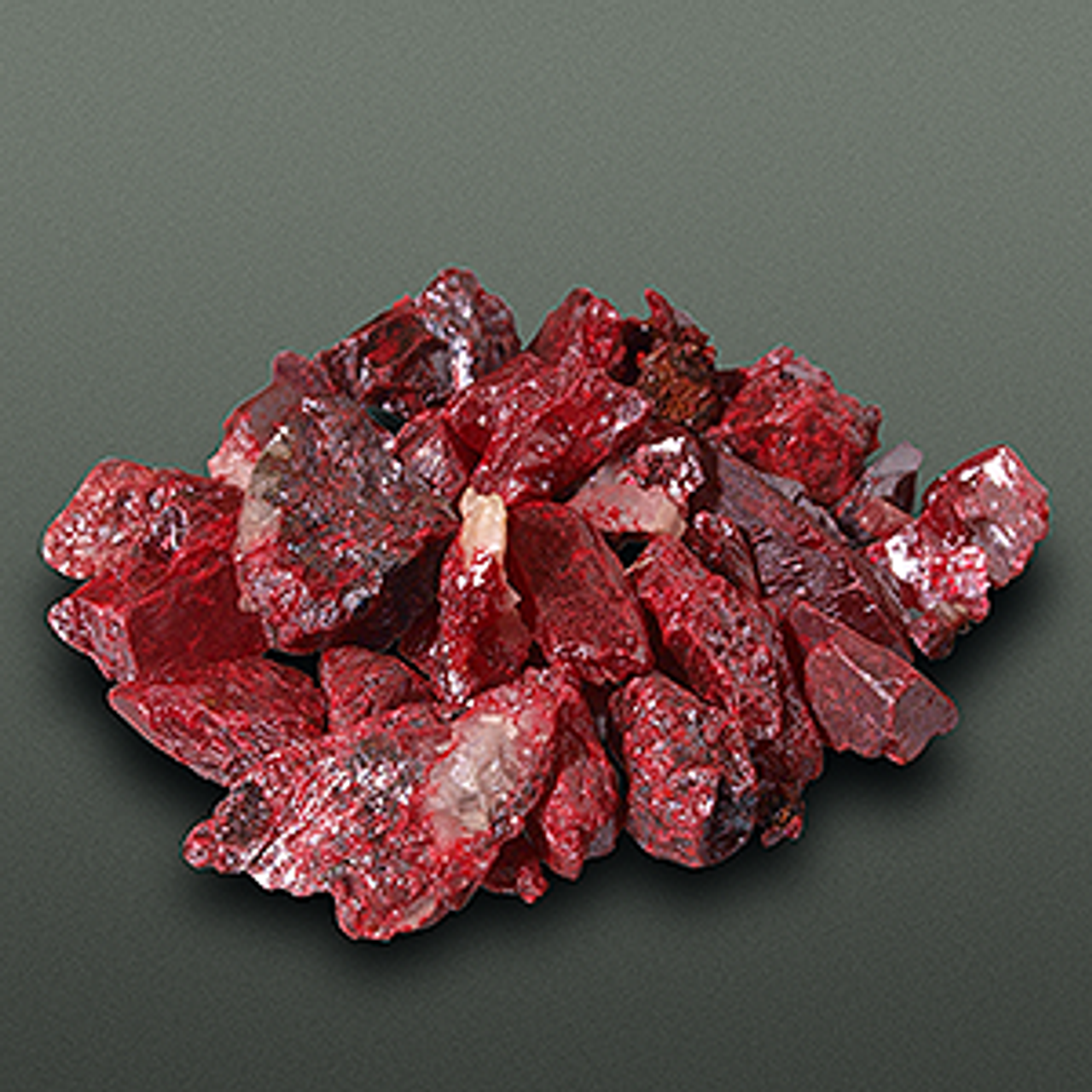Cinnabar pigments
 Cinnabar (Chinese red, Mercuric Sulfide)
Cinnabar (Chinese red, Mercuric Sulfide)
PR 106
Natural pigment suitable for icon painting (egg tempera), oil painting and watercolor painting without additional grinding.
Cinnabar, the native red sulphide of mercury, can appear as a liver-colored ore or occasionally as dark red crystals with a non-metallic adamantine luster. When ground, cinnabar is the only bright red pigment known to the ancients. Although not particularly rare, it was well-known among artists and more commonly used in paintings than lapis lazuli.
"Let not your flesh colour freeze; let it not be too cold or purple, for carnation which approaches the whiteness of linen cannot bloom with the signs of life. But vermilion makes it glow with a more fleshy hue. Endeavour to produce this warmth. … In painting peasants, shepherds, and mariners, spare not yellow ochre with your vermilion. … Be careful not to light up the flesh tints in either sex with too much white; no pure white is visible in the living subject." - Rubens
Cinnabar was widely found in Europe. Due to its popularity and high demand, it became so costly that the Roman government had to fix its price to keep it affordable. Covering a manuscript page with cinnabar or gold cost the same.
"Nothing is more carefully guarded. It is forbidden to break up or refine the cinnabar on the spot. They send it to Rome in its natural condition, under seal, to the extent of some ten thousand pounds a year. The sales price is fixed by law to keep it from becoming impossibly expensive, and the price fixed is seventy sesterces a pound." - Pliny
Master Pigments' cinnabar pigment is prepared from natural cinnabar crystals, sourced from mines in the Hunan province of China. The preparation process begins with washing the crystals, followed by gradual wet milling in a metal-free environment to prevent contamination. The crystals are first milled with large media to reduce the particle size to fine sand, which is then washed again to remove as many impurities as possible. Next, the sand undergoes wet milling with smaller zirconia media, a very hard and heavy substance, for an extended period. This lengthy milling time with minimal contamination is key to producing this unique red color. After fine milling, the solution is left to settle, followed by multiple washes until the water is pH neutral. The pigment is then left to settle and air dried. The result of this meticulous process is a pigment with a strong, vivid red color, the true definition of red, free of orange or purple undertones—the king of reds.
The fine grade of cinnabar is a vibrant, vivid red, essential for any flesh tone. It is a very warm and strong pigment, requiring only a small amount for flesh tints in mixes. The medium grade is darker and full of metallic sparkles.
Cinnabar is considered toxic due to its mercury content. Despite its toxicity, it has a history of use in traditional Chinese medicine. However, it should be handled very carefully, whether in dry form or in a medium.

